- JAPANESE
- LANGUAGE
X
 THAT IS GOOD
THAT IS GOOD
A series of interviews with the four artists from the exhibition “Do No Ko Vol.2”, which will be held at PARCO no-ma from December 15th to 22nd. This is the second issue!
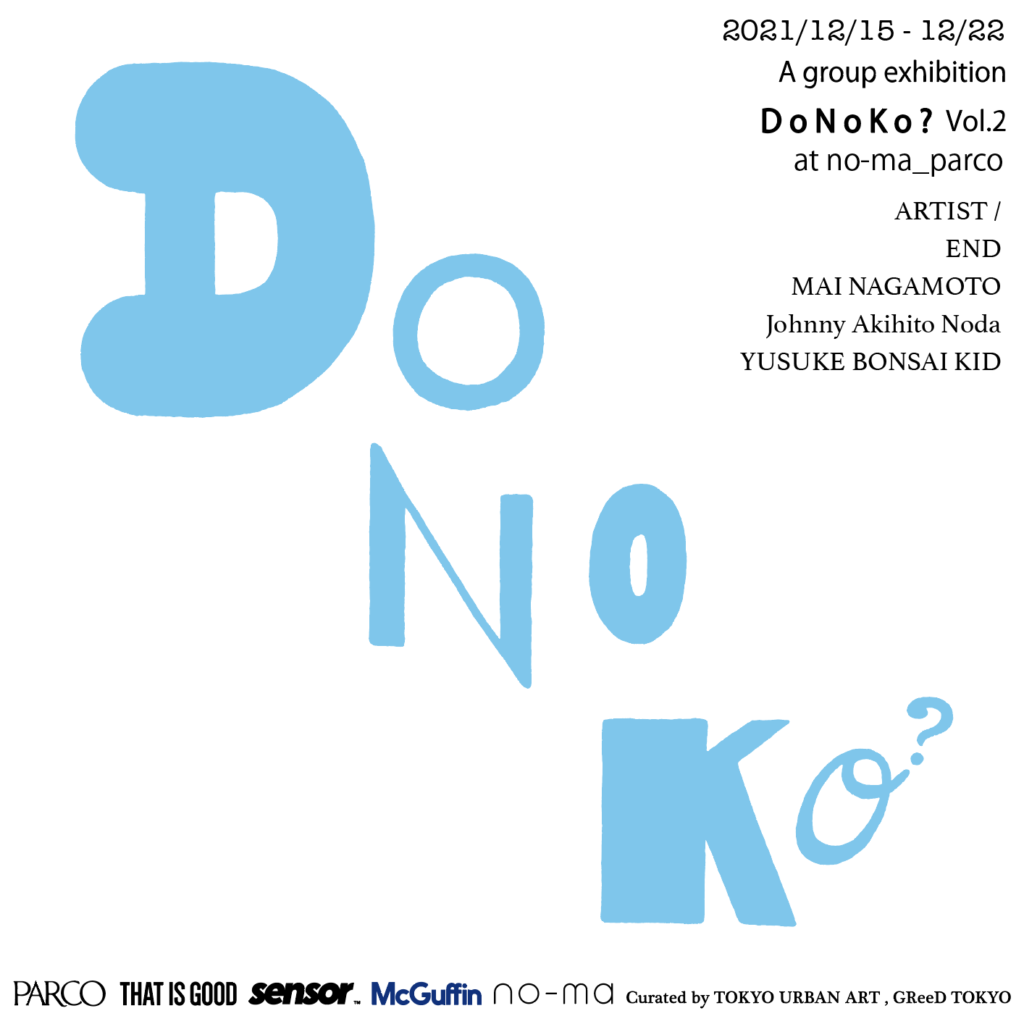
2021/12/15-12/22
A group exhibition
D o N o K o ? Vol.2
Curated by TOKYO URBAN ART , GReeD TOKYO
at @noma__official
ARTIST /
END
MAI NAGAMOTO
Johnny Akihito Noda
YUSUKE BONSAI KID
This time it’s Yusuke Hamamoto as YUSUKE BONSAI KID, a bonsai artist.
You might be surprised to know that bonsai is an art form. He is one of the most sought after bonsai artists in Japan, and has collaborated with many apparel companies.
He has tattoos all over his body, and my first impression was that I had never seen anyone so wild in my life, but when I talked to him, he was very friendly and light-hearted person, and I could listen to his cheeky conversation and feel his belief in bonsai.
(Although it is not the main topic, I wonder if I have conveyed his unique one side…)
I would like to convey the fascination of bonsai as a Japanese culture, which is truly a proposition for THAT IS GOOD, while also sharing his roots. So here you go.
-When did you first get into bonsai?
At the age of 21, I started working for a gardening and bonsai shop, and started training under the master. I trained all through my twenties, and at the age of 29, I left the master and started working on my own.
-How did you get into the world of bonsai?
When I found out, I just started lol
People often ask me how I got started, but I say, “It just started as a result…” That’s an “artistic” way of answering, isn’t it? loool
At that time, I wore a high neck or something to hide my tattoos while I was learning.
There were also clothes with longer necks available on sale, so I wore such clothes to hide my tattoos.
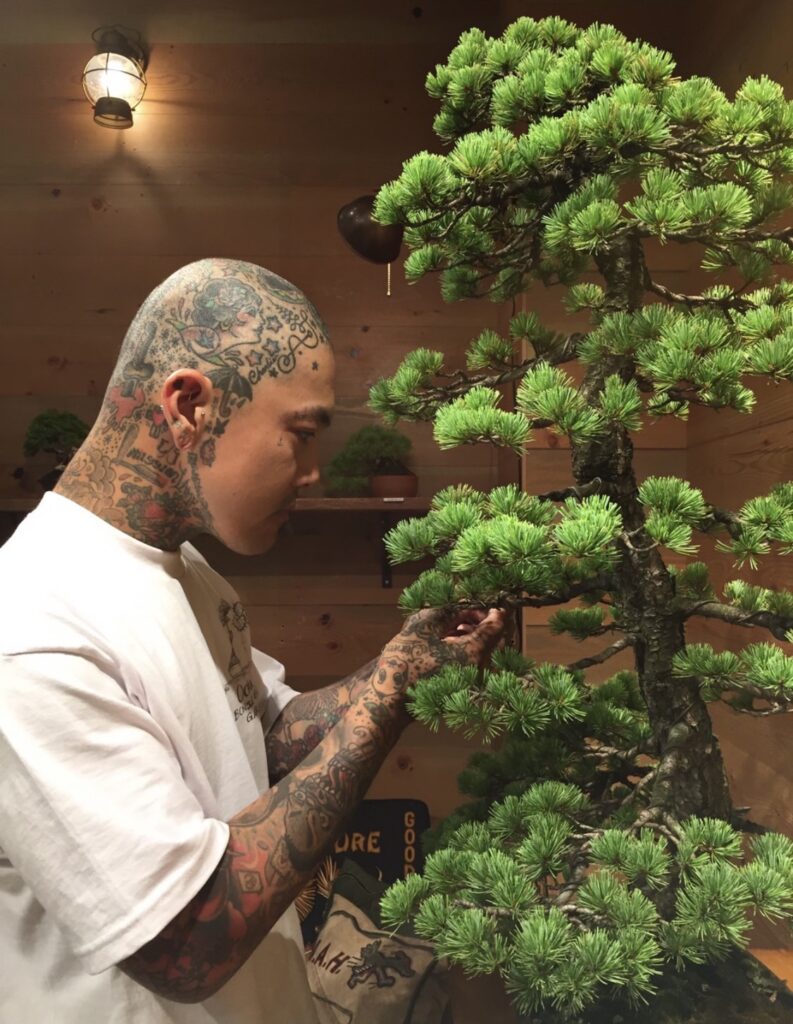
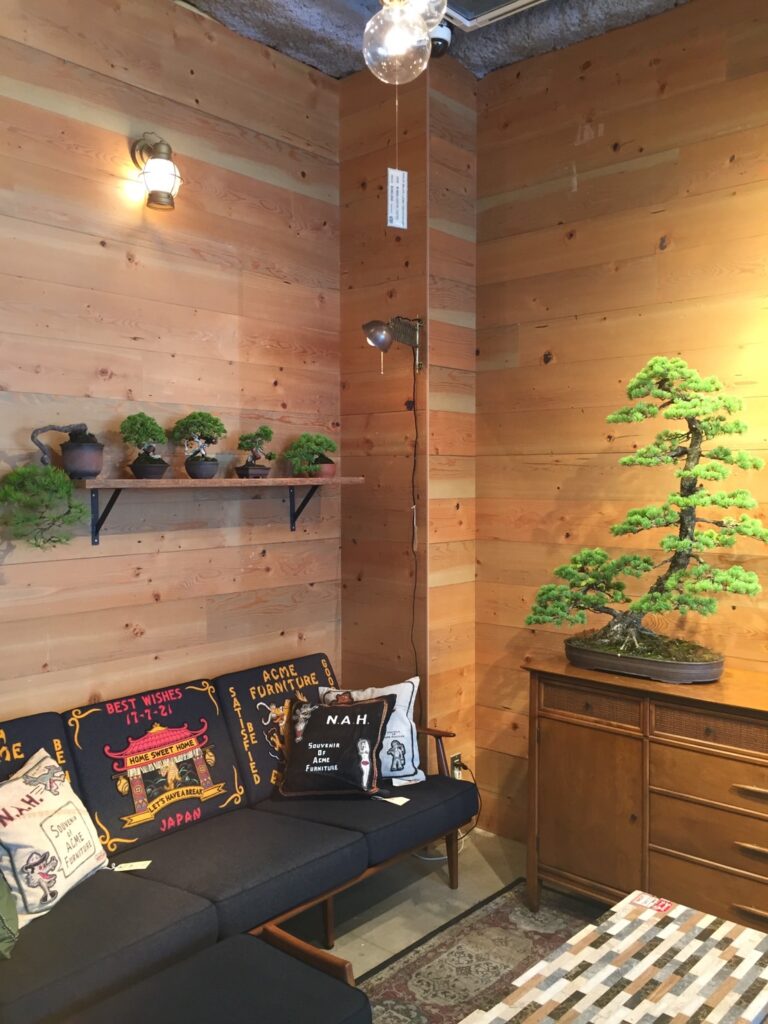
Photos of actual decorations in the store. I can imagine how completely different it would be without the bonsai.
-I see…I guess bonsai is a bit of a “craftsman’s world” and it sounds tough, but is it really tough?
In my time, it was hard.
Mentally, I was not like that, but physically, my schedule was just too hard. I was so busy that I couldn’t even take a bath because of the early mornings and late nights.
In my case, I was working on my bonsai after work, so I ended up working on it all the way until I went to bed. I thought, “Well, I don’t need to take a bath because it will be dirty tomorrow anyway”. So I would only take a bath when I was meeting someone. Like on a date with my girlfriend
-You’ve been touching bonsai all the time…!
A plastic model is finished when it is finished, and a painting is finished when it is finished.
But with bonsai, even after it is completed to a certain extent, it will continue to grow.
You can use the growth to make it even better. If you leave it alone, it will naturally deteriorate and become a bad tree.
If you leave it alone, it will naturally deteriorate and become a bad tree.
That’s why there is no end to it, and we keep chasing the ideal in the right direction.
It’s a living thing, so you have to take care of it, and that’s both the fun part and the hard part, which is probably the difference from general art.
Is my answer a little too serious? lol
-It’s a proper funny story! lol
Is it still different from the realm of gardeners and the like?
Actually, I’m also an active gardener, and my original apprenticeship was a two-way street.
That’s why when I go back to my hometown, I’m out there cutting trees in people’s yards.
People say I’m a bonsai person, but I’m also a gardener.
-Back to the topic of bonsai, I think it depends quite a bit on the type of tree and its personality.
There are basics to everything, aren’t there?
So, even though the shape and form of each tree is different, what we do is the same.
However, I try to match the personality of the tree.
A tree always has good points and bad points, and I try to hide the bad points and bring out the good points. If we were to compare it to a person, the quality of the hair would be different for each individual, with some having a habitual hair style and others having straight hair. So even with the same tree, there are times when the hair doesn’t come together in the same way.The other thing is the potting. For example, if you have a bonsai that has branches going down, don’t put it in a shallow pot, put it in a deep pot so you can see the scenery. Even a good tree can look like a bad work if the top tree and the bottom pot are not in harmony. It’s like the balance between tops and pants in fashion.
A little bit of balance makes everything look different, doesn’t it?
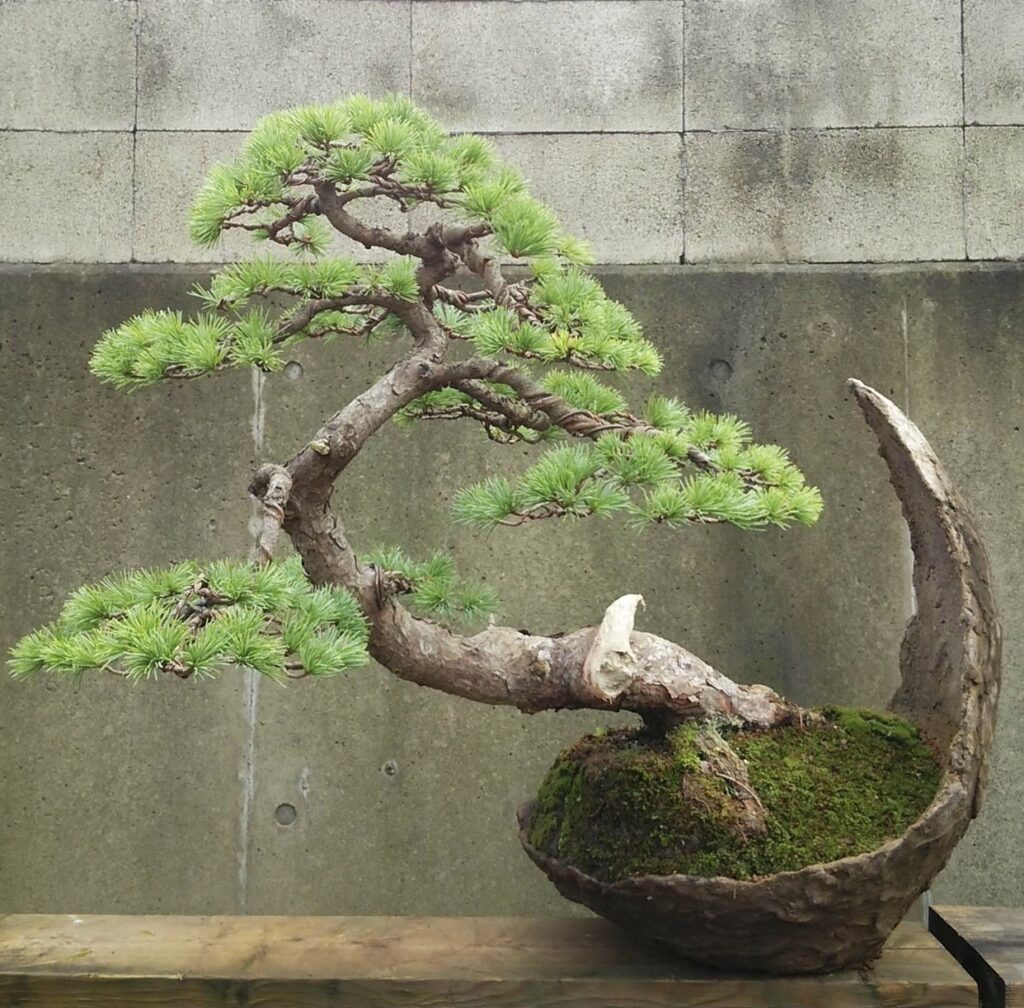
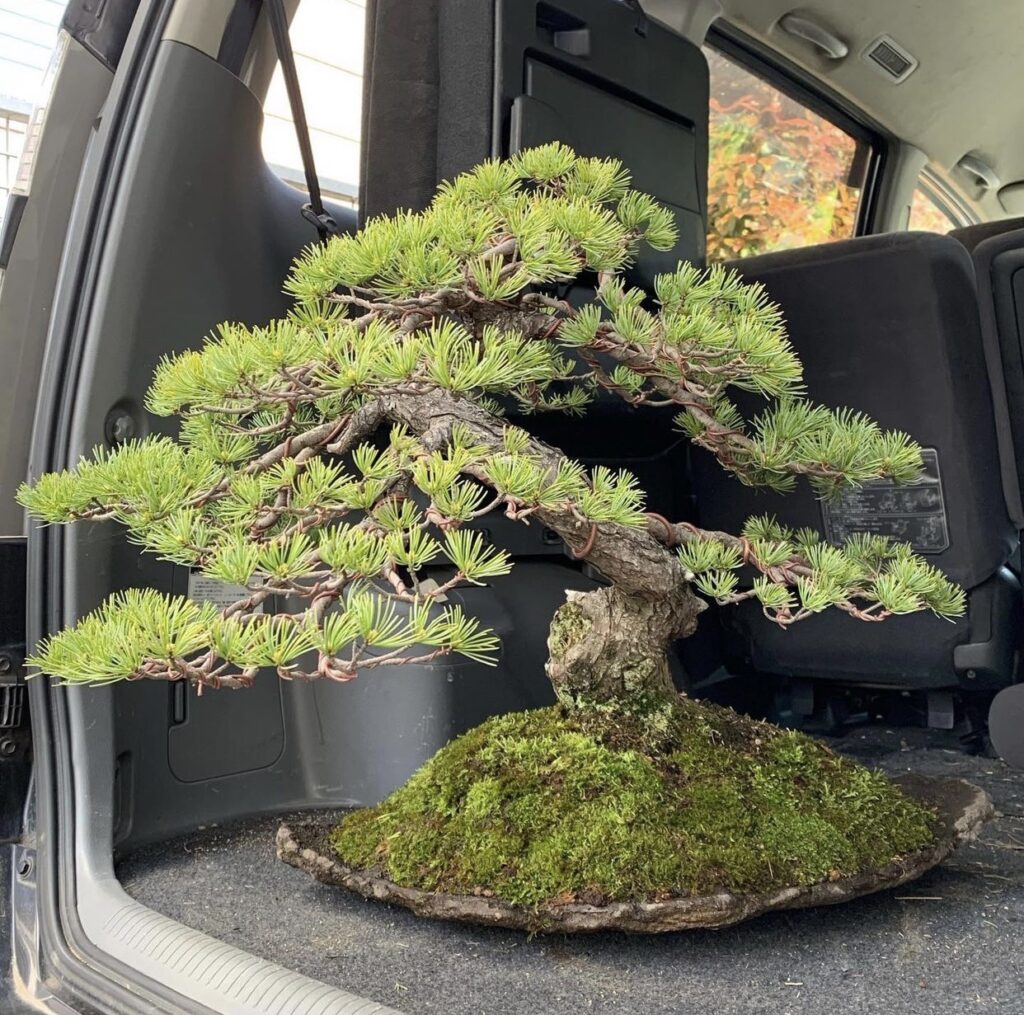
A picture he showed me when he explained about the balance between the tree and the pot.
-By the way, how old is the oldest bonsai you have?
It’s about 150 years old, if I’ve ever seen one. It is a bonsai that I inherited from my master.
The size of the tree is about 70cm, so it is not big, but….
I am often asked that the price is not necessarily higher because the tree is bigger, but the price is higher because the tree is smaller but older.
Rather than size, the value of an item is based on its age and well-balanced shape.
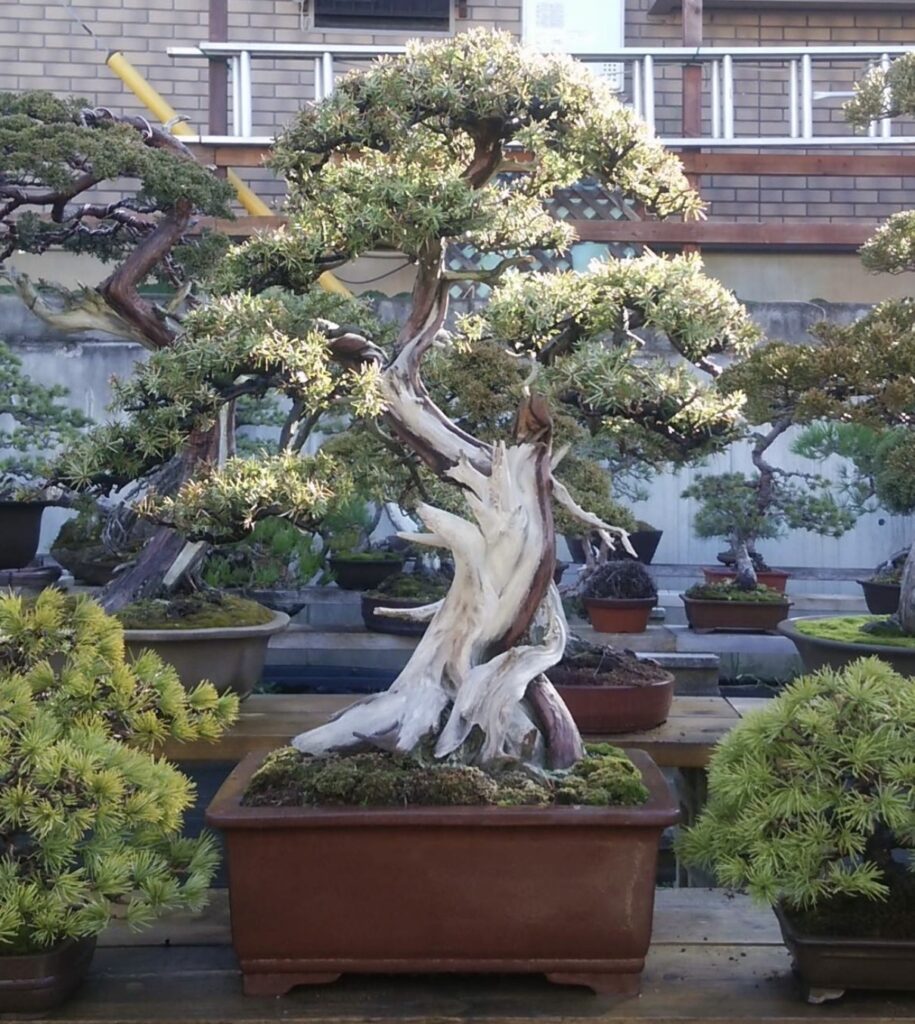
A photo of the 150-year-old tree I inherited. I don’t know what it looks like, but it looks dignified.
-I see. Are most people who buy a bonsai plant going to take care of it themselves after they buy it, or are they going to let you take care of it after they buy it?
I think it’s half and half.
Of course, there are those who enjoy it themselves, but in the end it often gets out of hand and they are asked to take care of it.
So I guess it’s not 50/50, but 7:3? Yes, 7:3 lol
-Okay…lol
When creating a bonsai, is it “originality” that the customer is looking for? Or is it more “traditional”?
I get a lot of work and create in a lot of different situations, but what I have always done hasn’t changed. I learned to make bonsai in a “traditional bonsai” kind of place, so I can’t do anything fancy, but I do it in a traditional orthodox style.
Whether I make it in Japan, overseas, or while playing with my kids at home, it’s all the same.
-Do you have any kind of authorship of your own?
At the risk of sounding cool, bonsai is a way of expressing natural scenery in a pot.
Therefore, you cannot express a landscape that you do not know. You can learn techniques with experience, but you can’t paint a landscape you don’t know.
On the other hand, I have about 1000 different views in my mind. That means I can make 1000 different bonsai!
-You’ve got a smug look on your face! By the way, is there a genre of bonsai?
What is Hamamoto’s position in the world of bonsai? I’m very curious.
Even if there is a border between major and underground genres, I don’t think it’s my job to decide where I belong.
Even if I were to make a royal style bonsai because I am covered in tattoos, there would be people who would judge it as “outrageous”.
This is an extreme view, but I don’t really care about the evaluation.
-I think I caught a glimpse of the craftsman side of you, if I may say so myself.
I don’t mean to change the subject, but is there a turning point where you became independent?
I quit when I was 29, but on New Year’s Eve when I was going to be 30 the next year, he said, “You’re already 30, aren’t you? Go do it yourself. I don’t remember, but it seems that I was interviewed. I don’t remember, but it seems that when I was interviewing for the job, I said, “I want to be independent when I’m 30! I don’t remember, but it seems that I had said during the interview that I wanted to start my own business at the age of 30, and my master remembered that. So I’ve been unemployed since the beginning of the New Year.
-Oh! So it was quite an abrupt move. How did you start to get work from there?
I made my own flyers and posted them at houses where trees were growing.
Then I started to get jobs, and through that connection, I started to get offers from neighboring houses and relatives’ houses.
I was spreading flyers for about a year, and from the second or third year, I started to get a few jobs.
But in the beginning, it was not uncommon for me to do one job and then have nothing the next day, so I was so anxious that I couldn’t sleep and went back to spread flyers.
-You didn’t even get a job from your master, you managed on your own.
It may sound like I’m bragging, but I had been training hard and I was confident that I could produce good results as long as I got work. But the fear of not having a job was always there.
-How long did it take for you to eventually stabilize?
When I look back on my past, I think that up until eight years ago, I used to spend my money as I pleased, and although I was independent, I was not truly independent.
When I look back on my past, I think I never really became independent. I began to feel that I needed to earn money properly. Before that, I used to buy bonsai trees when I earned money.
-Becoming a father was a kind of start, wasn’t it?
But then again, you really love bonsai when you buy them in private too…!
I don’t really know the definition of work.
I would be offended if I said I was just playing, but I am just doing it properly (laughs).
On the other hand, there are some bonsai that I want to do and some that I don’t want to do, depending on my mood. lol
How can I control my motivation?
My feelings come out in bonsai too. Now that I have a child, I feel like “I have to protect my life!”
-You solved it on your own, lol.
For now, I’m just hoping for results! lol
So that was the first part of the interview with Yusuke Hamamoto.
This time, we mainly talked about “What is bonsai? In the second part of the interview, I’d like to dig a little deeper into Hamamoto and ask him about his painting activities in addition to bonsai!
TEXT : THAT IS GOOD editorial department, Koga
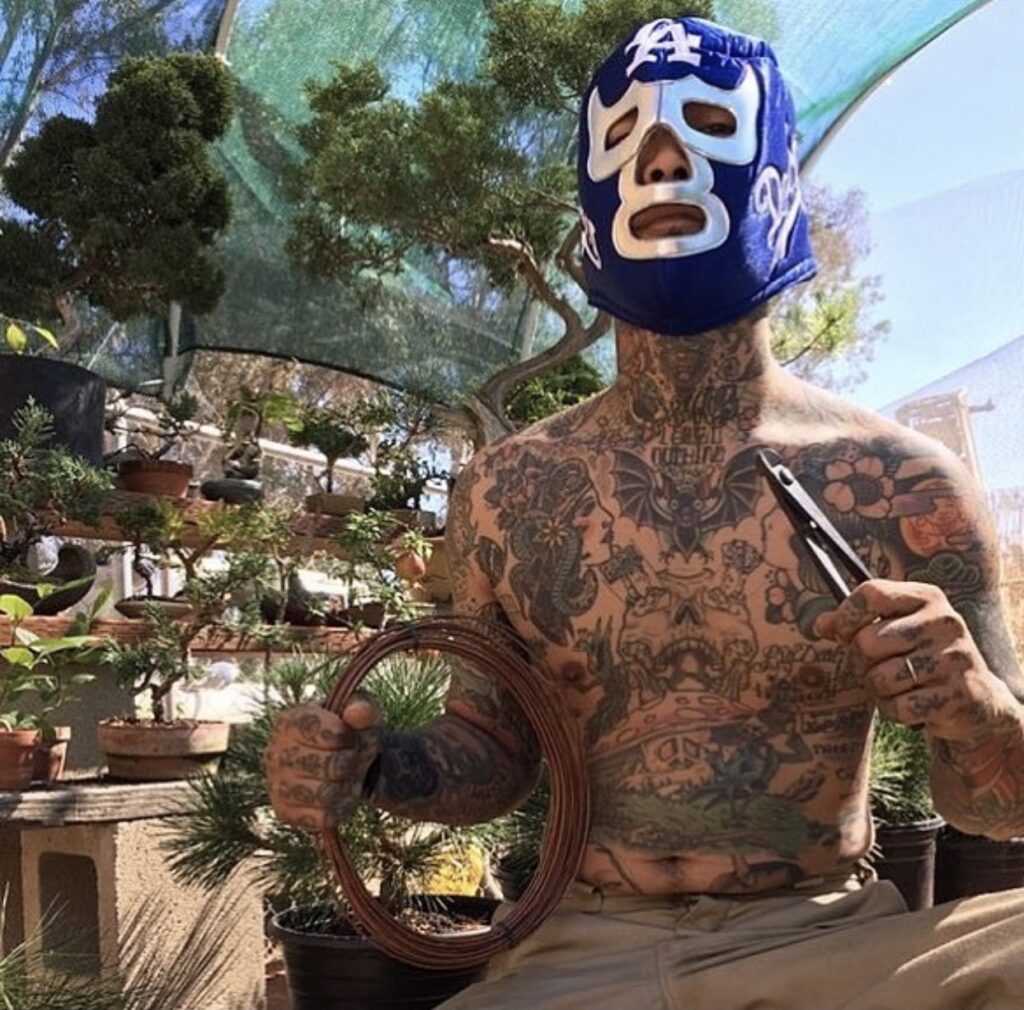
YUSUKE BONSAI KID / Yusuke Hamamoto
Born on December 10, 1979.
He started training under his master at the age of 21, and became independent at the age of 29, establishing Hamamoto Minematsuen. He is the father of two children.